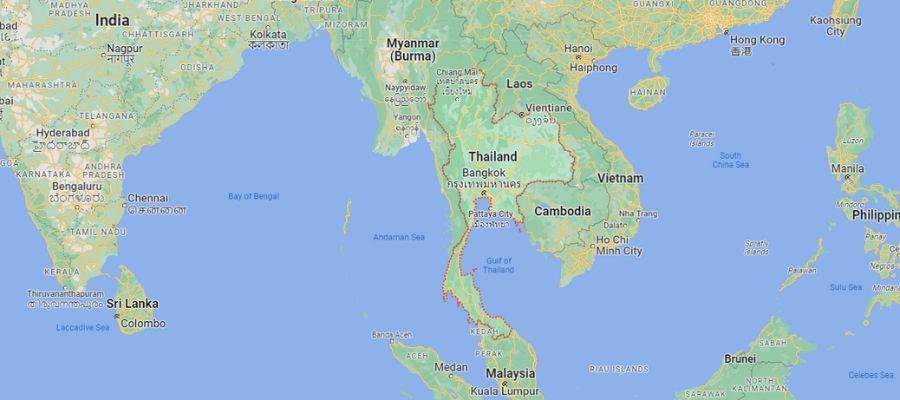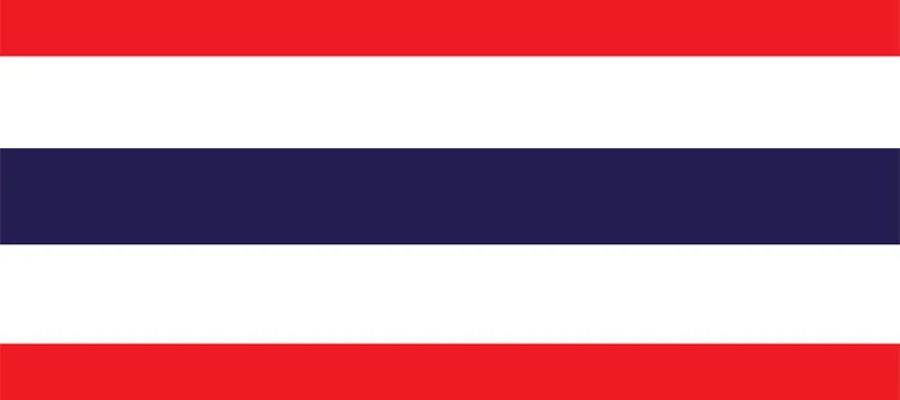Languages are the intricate threads that weave together the tapestry of human culture, history, and communication. Thai speech and language development is particularly fascinating with its rich history, distinctive characteristics, and widespread influence that has been developing throughout kingdoms dating back thousands of years. In this essay, we will explore the Thai language, including its global presence, linguistic features, writing systems, language family, official status, geographical distribution, and unique traits.
Thai is predominantly spoken in Thailand, where it serves as the official language and is spoken by over 65 million people. Additionally, there are Thai-speaking communities scattered across the globe. Thai-speaking communities have found homes in various parts of the world, including the United States. In the U.S., cities like Los Angeles and New York host sizable Thai populations, contributing to the diverse cultural fabric of these urban centers.
Thai belongs to the Tai-Kadai language family, which is thought to have originated in southern China. Within the Tai-Kadai family, Thai is classified under the Southwestern Tai group, which includes various dialects and languages spoken across Southeast Asia.

Interesting Facts About Thai Speech and Language Development
Unique Numbering System: Thai has a unique numerical system that employs an interesting mix of native Thai words and borrowed Pali words. For instance, the number “10” is referred to as “sip” in Thai, while “100” is “roi.”
Polite Pronouns: Thai culture places great emphasis on politeness. The language reflects this through its extensive set of pronouns that convey different levels of formality and respect. The choice of pronoun depends on factors such as age, social status, and the nature of the relationship.
Royal Language: In Thai culture, a specific elevated language is used when addressing or referring to the royal family, known as “Pra Ratcha Phithi Phasa.”
Thai Speech and Language Development
Thai Consonants Phonemes in Comparison to English
| Thai Consonants Not Shared with English | /ʔ/ /kʰ//tʰ//tɕ//tɕʰ/ /trilled r//pʰ/ |
| Thai Consonants Shared With English | /p/ /t//b//d//f//h//j//k/ /l / /m/ /n/ /ŋ//s//w/ |
| English Consonants Not Shared with Thai | /g/ /v/ /z/ /ʃ/ /ʒ/ /tʃ/ /dʒ/ /ð/ /θ/ /r/ |
Thai Vowels Phonemes in Comparison to English
| Thai Vowels Not Shared with English | /ɯ//ɤ//aː//eː//ɛː//iː/ /oː//ɔː//uː//ɯː//ɤː/ |
| Thai Vowels Shared With English | /a/ /e//i/ /o/ /u/ /ɔ//ɛ/ |
| English Vowels Not Shared with Thai | /ʊ/ /I//ʌ//ə/ /æ/ /ɚ/ |
The Use of Phonotactic Constraints in Thai Speakers
Something fascinating that we want to point out is that Thai is just the most common language of approximately 60 that are spoken in Thailand! Thailand’s monarchy first developed in the 1200s and it has been a seafaring and trade nation for centuries. What that means is that the it contains main words and sounds from its land neighbors such as Laos, sounds and words from nearby island nations, and religious influence from Sanskrit. It’s beauty is made even more complex by the fact that it’s a tonal language so meaning changes based on individual sound intonation.
- There are five tones that can be used and change the meaning of a word.
- Consonant clusters exist, but are very limited. /kr/, /kl/, /kw/, /kʰr/, /kʰl/, /kʰw/,/pr/, /pl/, /pʰr/, /pʰl/, /tr/
- Most native Thai words are monosyllabic except for compound words.
- In open syllables, only long vowels occur.
Language Specific Differences Between English and Thai
| Feature | Thai | English |
|---|---|---|
| Sentence Word Order | S-V-O, but the subject is often omitted | Strict Subject-Verb Object order |
| Adjectives/Noun modifiers | Noun-Adjective order | Adjective-Noun order |
| Possessives | A word (khong) is added in front of the noun or pronoun, but it may often be omitted | Marked with morpheme “‘s” |
| Possessive Pronouns | Do not exist, indicated by the use of khong, as mentioned above | Mine, yours, his, hers |
| Verb inflection | Lacks any form of inflectional morphology | 2 present tense forms: I eat You eat He/She/It eats We eat They eat |
| Pronouns | Exist with different pronouns for different contexts (subject pronouns are often omitted and replaced by nicknames) | Exist |
| Pronoun Gender | female and male personal pronouns: males say ‘pom’ (ผม) females say ‘chan’ (ฉัน) | He, She, It |
| Subject of Sentence | Often omitted | Subject stated specifically or with pronouns in each sentence. |
| Regular Past Tense | No verb tenses exist, auxiliaries and verb serialization are used instead | One form (-ed) |
| Irregular Past Tense | No verb tenses exist, auxiliaries and verb serialization are used instead | Exist |
| Negatives | “Not” is placed before the verb | “not” follows the copula, precedes any other verb |
| Double negatives | Often used when answering questions | Not allowed |
| Question formation | Question words go at the end of phrases | Word order inversion or addition of “do” |
| Definite Articles | Do not exist | the |
| Indefinite Articles | Do not exist | a, an |
| Prepositions | Exist. “Kaang” is often placed in front of prepositions to indicate location. | Exist |
| Present Progressive Verb Form | No verb tenses exist, auxiliaries and verb serialization are used instead | Exists |
| Modal Verbs | Exist. Positioned before the main verb. | Exist. Positioned before the main verb. (I may be late). |
| Copula/”To Be” Verb | Multiple words that function as copulas | Used with nouns and adjectives (I am a boy. I am hungry.) |
| Auxiliary Verbs | Exist | Exist |
| Passive Voice | Indicated by the insertion of thuk before the verb | Object precedes the verb and stating the subject is optional (His hair was cut by the woman) |
| Direct Object Pronouns | With ditransitive verbs the direct object comes before the indirect object. | The indirect object typically comes first. (I gave him the book) |
| Conjunctions | Conjoins ideas with a conjunction word (E.g. Laeo is a conjunction for sequential actions) | Conjoins ideas with a conjunction word (and, but, or) |
| Plurals | Uses classifiers and/or numbers to indicate quantity – no plural forms of nouns | Add “s” and some irregular plurals (children) |
Age of Acquisition for Thai Consonants
There are no systematic studies that confirm the following information. Much of the data is based on the development of English speaking babies. Similar to children in the US, Thai babies use cooing and babbling before intelligible sounds are developed. Usually, the first sounds are bilabial and nasal sounds, such as [m] or [p]. Glottal sounds and the basic vowel sounds commonly develop by 9 months of age. At 11 months, Thai children are expected to have produced their first words. Children are also expected to be able to say complex vowels and consonant clusters when they are 5 years old (Lorwatanapongsa & Maroonroge, 2007).
| Age in years and months | Intelligible consonants |
|---|---|
| 2;1-2;6 | [m], [n], [h], [j], [kh], [ʔ] |
| 2;8-3;0 | [w], [b], [k], [p] |
| 3;1-3;6 | [th], [t], [l], [tɕ], [j], [ph] |
| 3;7-4;0 | [ŋ], [kh] |
| 4;1-4;6 | [f] |
| 5;1-5;6 | [s] [s]* |
| >7 | [r] and the rest of unlisted consonants |
Sources:
Lorwatanapongsa, P. (2007). Thai Speech Acquisition. In S. Maroonroge (Ed.), The International Guide to Speech Acquisition (pp. 554-565). Delmar Cengage Learning.
Ryan, C. (2013, August). Language Use in the United States: 2011. Retrieved October 04, 2016.
Thai language. Wikipedia. Retrieved June 03, 2023
The essential Thai grammar concepts to understand. (2016, August). Retrieved October 03, 2016,
Contributing Researchers:
A special thanks to Kaitlyn Johnson and Miranda Scheel with Truman State University for data compilation and research that went into this article!



